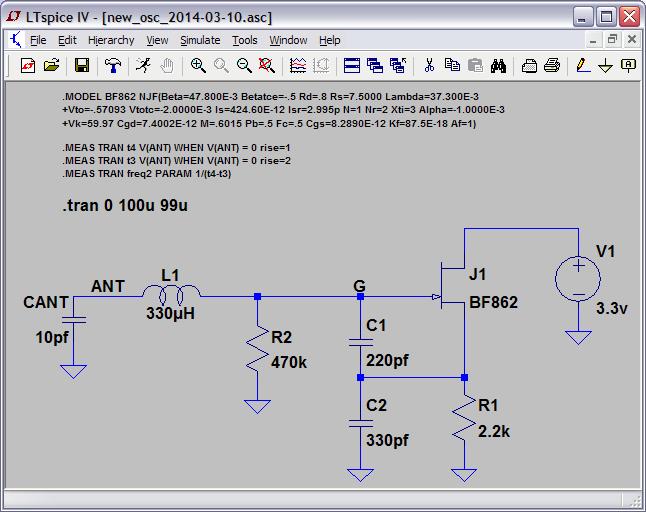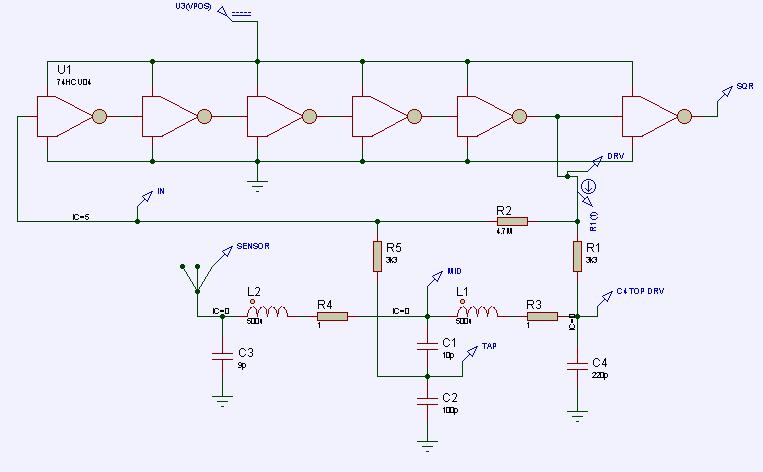"Here you can download a simplified version of your circuit with the following advantages:" - livio
Thanks! Hmm. The 0.1pF capacitor seems like it might be a problem. Interesting to see the simplified drive topology as transistors often hide this.
==============
"WISC" + THEREMINO = SPECIAL BLEND OSCILLATOR
I woke up too early thinking about the combined sense / drive in livio's Theremino oscillator, and wondered if it could be combined with the Wiggly Inductor / Split Capacitor (WISC technology!) tank of my oscillator. This approach would provide the best sensitivity possible because the sense / drive would be across the large, low voltage swing capacitance, and pure antenna capacitance could form the other end with no sense circuitry loading it down. It seems to spice OK with an ideal inductance, it provides plenty of voltage boost, and it self-starts:

In simulation I'm seeing >100V p-p at the antenna, and a whopping 4.3%F/pF sensitivity. I've played around with the values some, but not a ton so it's likely not optimal. And who knows what it will do in reality, but it seems quite promising. ESD protection of the gate might be problematic because it swings below ground. FET model is now included in the schematic, and the data collection starts farther out to let the oscillations build to max. I removed the initial condition to test self-starting.
LTSpice file here: http://www.mediafire.com/download/k9x1zaim9b0538c/new_osc_2014-03-10.asc
[EDIT] Found some MPF102 FETs in my junk box, found a Spice model for it* on the web. With a few circuit adjustments (C1=100pF, C2=220pF, R1=1k) it is oscillating on my bench at 580kHz with an air-core inductor I had laying around. Seems a bit less stable than my previous oscillator, but noticeably more sensitive.
[EDIT2] Plugged my 0.5mH air-core into it and it's oscillating at 2.63MHz, something I couldn't get my previous oscillator to do. I'm sold! Thank you so much for your help livio!
[EDIT3] With this oscillator topology, an air-core this small, and the simple low impedance series connection between them, one could incorporate the tank inductor as part of the antenna assembly. This might boost sensitivity a bit more as the coil would then be part of the sensing area. Doing this, and if using a UHF or other coaxial connector for the coil + antenna, one could also likely ground the outer part of the connector without disturbing things too much.
===========
*.MODEL MPF102 NJF(VTO=-3 BETA=1.304000e-03 LAMBDA=2.250000e-03 IS=33.570000e-15
+ISR=322.400000e-15 ALPHA=311.7 VK=243.6 RD=1 RS=1 CGD=1.600000e-12
+CGS=2.414000e-12 M=.3622 VTOTC=-2.500000e-03 BETATCE=-0.5 KF=9.882000e-18)


